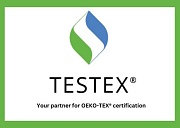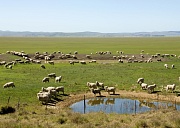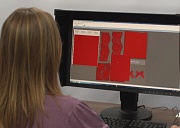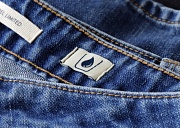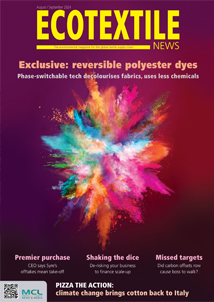SPONSORED CONTENT - What we wear says a lot about who we are. As consumers, we look for products that reflect our values and today that means clothing and textile products that are sustainable and better for us and the planet. How can businesses capitalise on this demand for more environmentally friendly products?
Textile dyeing is an area of increasing concern. Traditional dyeing methods have been wasteful, requiring the use of large amounts of water, energy, and harmful chemicals, which often end up in the environment through effluent loss.
Forward-thinking manufacturers are turning to alternative dyeing techniques, such as dope dyeing and vegetable dyeing, to answer this demand for more sustainable products.
Dope dye
Sometimes called spun dyeing or coloration, mass coloration or dyeing, or solution dyeing, this technique involves thecoloring matter being incorporated into a polymer solution, or polymer melt, before the fiber filament formation. Since the color is incorporated directly into the fiber, it offers exemplary colorfastness and superior coloring matter dispersal. It also negates dye loss into effluents and ends the need for after-treatments and additional rinsing.
Vegetable dye
Natural dyes are another even more sustainable alternative. Biodegradable and renewable, these dyes originate from plants – seeds, flowers, roots, leaves, fruits, etc. – and because they come from ‘natural’ they are better for us and the environment. However, they do have limitations – poorer colorfastness and reproducibility of shades and a low affinity for synthetic fibers.
Challenge
While these two dyeing techniques do provide an effective solution to the demand for more sustainable dyeing techniques, there is a problem: differentiating between them and other less sustainable options is difficult. Without laboratory analysis it is impossible to distinguish between genuinely dope or vegetable dyed materials and other less sustainable options.
To build trust in dope or vegetable dyed products, manufacturers and brands must be able to verify and demonstrate to consumers and buyers that they have used these alternative methodologies. For this to have value, the laboratory assessment must be independent and delivered by a trusted service provider.
In today’s competitive markets, where demand for sustainable products is growing, demonstrable conformance to recognized standards, verified by a trusted third-party service provider, is the key to building consumer confidence and continuing business success.
SGS verification
SGS has developed dedicated screening services to help manufacturers and brands confirm their products have been dyed using either of these alternative dyeing techniques:
- SGS dope dyeing verification service
- SGS vegetable dyed material verification service
Using the latest analytical laboratory testing approaches, they can examine your textiles for colorant type and/or index ingredients. Their solution will allow you to differentiate between vegetable dyes, normal dyes, pigment dyes and dope dyes.
SGS Independently Checked (IC) Mark
The SGS IC Mark tells your buyers that a fabric or product has been independently verified as either dope or vegetable dyed.
The mark is a clear indication that your product has undergone:
- Laboratory analysis to verify the dyeing method
- Compliance testing against mandatory regulations
- Document review and on-site/remote assessment of manufacturing processes
- Restricted substances testing
Once a product has been verified as conforming to an agreed set of testing parameters, it can carry the SGS IC Mark. Stakeholders are then able to access details of the test criteria via the QR code contained within the mark.
The SGS IC Mark offers you and exemplary way to demonstrate compliance while building consumer confidence in your clothing and textile products.













